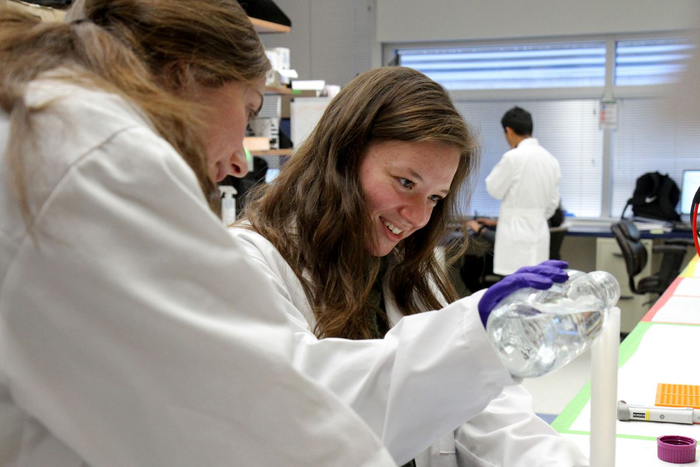Eyes are often said to be windows to the soul; however, for one West Virginia University student, they are windows to the brain and a key tool in the fight against Alzheimer’s disease.

Credit: WVU Photo
Eyes are often said to be windows to the soul; however, for one West Virginia University student, they are windows to the brain and a key tool in the fight against Alzheimer’s disease.
Rachel McNeel, a chemistry major in the Eberly College of Arts and Sciences, recently identified early metabolic changes caused by the disease in the eyes and brain which is an important step toward early detection.
The Honors College student and Beckley native will present her findings virtually to members of Congress during Posters on the Hill April 26-27.
Sponsored by the Council on Undergraduate Research, the event features the most talented researchers from colleges and universities around the country and provides them with the opportunity to demonstrate the value of undergraduate research.
With at least 6.2 million Americans living with Alzheimer’s disease, the importance of McNeel’s research cannot be understated.
“Research for Alzheimer’s disease is important for so many reasons,” she said. “Not only is the disease devastating for the millions of people who are diagnosed, but also the millions of families and friends who have to caretake and love them.”
Throughout the U.S., it is predicted at least 10% more people will be diagnosed with Alzheimer’s disease over the next five years, McNeel added.
“Alzheimer’s disease is thought to be caused by the abnormal build-up of proteins in and around brain cells,” she said. “Over time, different areas of the brain shrink. The first areas usually affected are responsible for memories. However, patients often experience visual defects before any neurological defects, so the eyes have been used as a diagnostic tool for the disease.”
Metabolic deficits in the eyes and brain are proposed as an early indicator for the disease; however, they still largely remain unknown.
To identify early metabolic changes caused by the disease within those two vital organs, McNeel and her mentor Jianhai Du, assistant professor in the School of Medicine’s Department of Ophthalmology and Visual Sciences, modeled early-onset Alzheimer’s disease in mice that carry mutations for three key genes in human patients.
Using mass spectrometry, the team identified key changes in the biochemical processes within the eyes and brains of Alzheimer’s disease model mice.
“Specifically, we found that a metabolite called pantothenic acid increased in both the brain and the eyes at a very early age before phenotypic changes, suggesting that early metabolic deficits might be critical for the development of the disease,” McNeel said.
Du is hopeful identifying those metabolites will lead to earlier detection of the disease and help reduce vision and neurological effects that occur in later stages.
“Earlier diagnosis before clinical symptoms is extremely challenging but crucial for preventing or treating Alzheimer’s disease,” he said. “The findings of early metabolic changes in both eye and brain may employ us with a new tool in early diagnosis through examining biochemical changes in the eye.”
McNeel initially connected with Du during her freshman year as part of the Research Apprenticeship Program.
Facilitated by the Office of Undergraduate Research, the two-semester program allows students with limited or no research experience to use federal work-study funds or gain course credit for undergraduate research apprenticeships with WVU research faculty.
“The program is a primer for building skillsets to work in lab settings,” he said “Rachel now continues to work as an undergraduate research assistant during school year and summertime. Because of her excellent performance, she is one of few talented undergraduates who works independently on research projects such as this one. I am thrilled to see her rapid growth into a young scientist.
For McNeel, participating in undergraduate research helped her better understand and apply what she learned in the classroom to help solve a real-world problem
“Being able to experiment with these biological processes forces me to learn them well,” she said. “Also, since I have been working in the lab since freshman year, I have had the opportunity to collaborate and teach other members in my lab, which has been very beneficial. Honestly, if it tells you anything, I enjoy being in the lab so much that I find myself spending many Friday evenings there doing experiments.”
Watch a video featuring Rachel McNeel.




